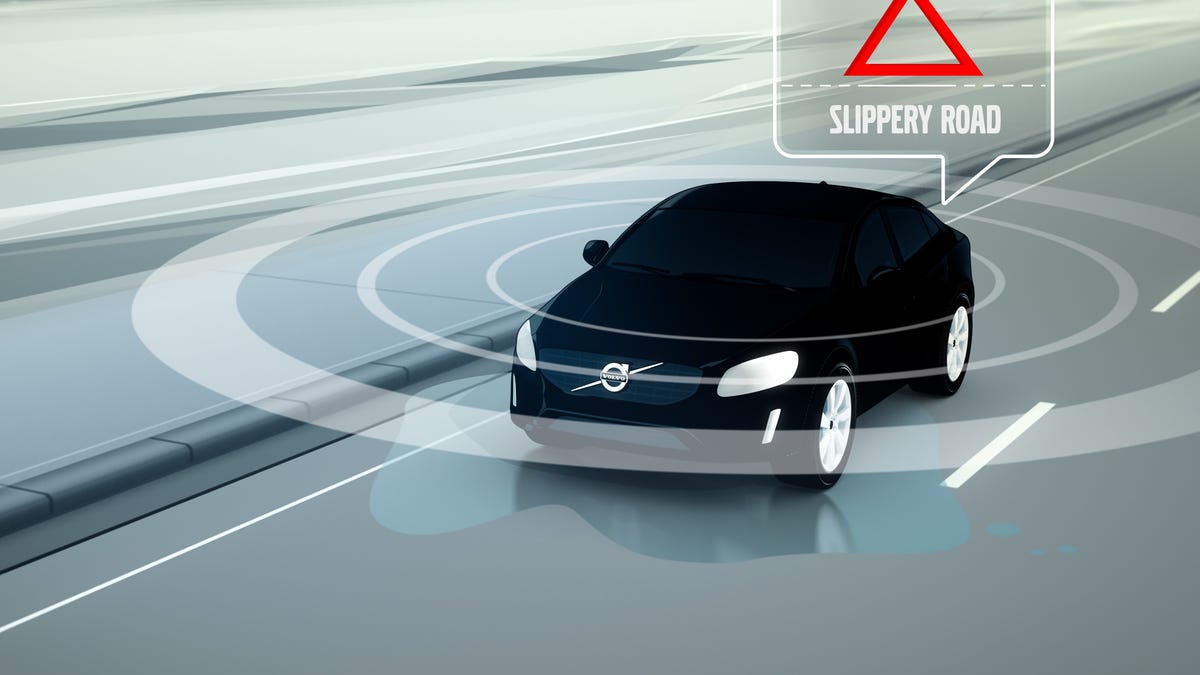Volvo cars become road maintenance probes
In a pilot project announced by Volvo, its cars will communicate slippery conditions to road maintenance authorities.

Many automakers and governments are developing vehicle-to-vehicle (V2V) communication, which lets cars instantly communicate safety information to traffic in the immediate vicinity, but Volvo puts a uniquely Swedish spin on the tech with a new pilot project. Its cars will communicate data from wheel-slip sensors to not only alert other cars to icy road conditions, but also to road maintenance authorities.
Volvo announced that 50 cars would participate in the pilot program, and that the "fleet would grow considerably" for next winter. The program is being run in conjunction with the Swedish Transport Administration and the Norwegian Public Roads Administration.
The cars in the program will need to be fitted with a data transceiver, which includes hardware to read sensor information from the vehicle. According to the Volvo's press release, the cars will communicate over cell towers, sending their data and location to a Volvo data center. That same data center can send alerts to cars in the immediate vicinity, warning them about slippery conditions.
This strategy varies from that being developed by Ford and other automakers, which uses Dedicated Short Range Communications to send data directly to other cars in the immediate vicinity.
Volvo notes that cars receiving the slip data will adjust the alert level they display to drivers based on their own speed. A car traveling at 10 mph entering a section of road with reported slippery conditions may give its driver a lower level alert than a car traveling at 60 mph.
Aggregate data will also be sent to road authorities. For sections of road with multiple reported incidents of slip, road maintenance department can send out a crew to de-ice and run snow plows.

